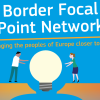Three innovative digital tools used for Disaster Risk Management across Europe are featured in this publication.
Effective cross-border communication and collaboration among Norway, Finland, and Sweden are vital for addressing emergencies in the northern regions of Europe. The Haga Cooperation, involving five Nordic countries, has been instrumental in initiating and fostering cross-border radio communication cooperation. The TETRA technology plays a key role in facilitating seamless communication between the Nødnett, VIRVE, and Rakel networks, enabling pooling of response resources and real-time data exchange. The extensive border between these countries requires uninterrupted communication to ensure timely interventions during emergencies. The TETRA technology offers interoperability with other systems. Success factors include committed partners, high visibility through the Haga declaration, adequate funding, and continuous engagement with end-users.
The INSECTRISK project serves as a model for effective cross-border cooperation in addressing insect-related health risks. The cross-border region between Romania and Bulgaria, intersected by the Danube River, faces escalating challenges due to the proliferation of mosquitoes and ticks, exacerbated by climate and environmental changes. The INSECTRISK project, initiated in response to these concerns, introduced the « Joint Strategy on the Sustainable Management of Excessive Insect Proliferation in the Cross-Border Region Romania-Bulgaria ». and a Geographic Information System (GIS) platform. This facilitates effective planning for insect treatments, a crucial component of the project's success.
The AdriaMORE project, funded through the INTERREG Italy-Croatia CBC Program, focuses on the enhancement of the integrated hydro-meteorological risk management platform along the Adriatic coast, building on the accomplishments of previous initiatives such as ADRIARadNet and CapRadNet. AdriaMORE's key objectives encompass strengthening the existing monitoring system, integrating maritime environmental data with hydrometeorological information, improving hydro-meteo-marine risk forecasting, and evaluating the impact of coastal floods on various parameters. A significant innovation is the integration of a hydro-meteo-marine forecast system into the existing ICT framework, marking a pioneering effort for civil protection applications.
- Kirjaudu sisään, jotta voit julkaista kommentteja
- Tunnisteet
- Cross-Border Cooperation DRM

